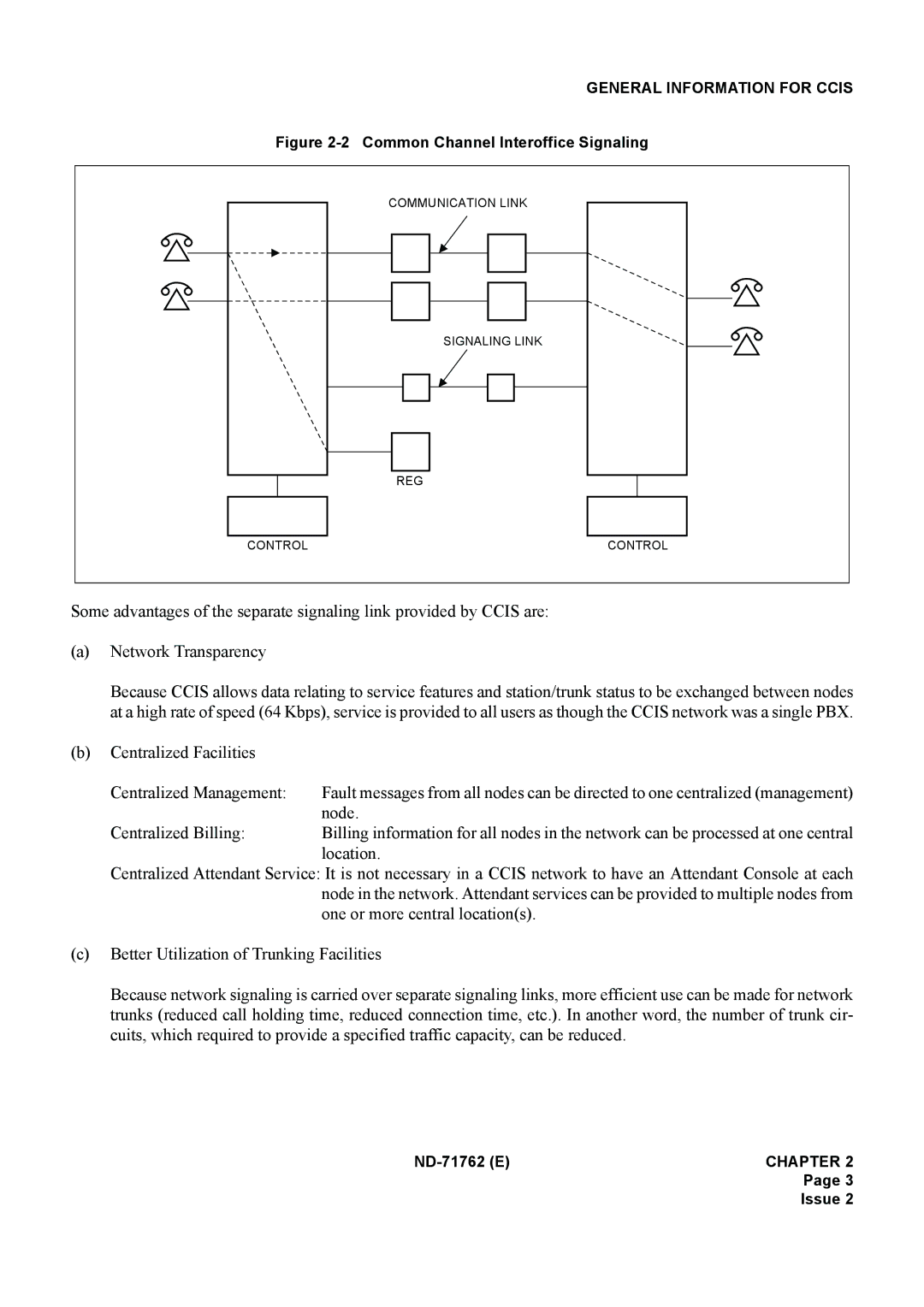
GENERAL INFORMATION FOR CCIS
Figure 2-2 Common Channel Interoffice Signaling
| COMMUNICATION LINK |
| SIGNALING LINK |
| REG |
CONTROL | CONTROL |
Some advantages of the separate signaling link provided by CCIS are:
(a)Network Transparency
Because CCIS allows data relating to service features and station/trunk status to be exchanged between nodes at a high rate of speed (64 Kbps), service is provided to all users as though the CCIS network was a single PBX.
(b)Centralized Facilities
Centralized Management: | Fault messages from all nodes can be directed to one centralized (management) |
| node. |
Centralized Billing: | Billing information for all nodes in the network can be processed at one central |
| location. |
Centralized Attendant Service: It is not necessary in a CCIS network to have an Attendant Console at each node in the network. Attendant services can be provided to multiple nodes from one or more central location(s).
(c)Better Utilization of Trunking Facilities
Because network signaling is carried over separate signaling links, more efficient use can be made for network trunks (reduced call holding time, reduced connection time, etc.). In another word, the number of trunk cir- cuits, which required to provide a specified traffic capacity, can be reduced.
Page 3
Issue 2
